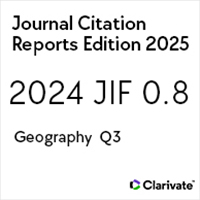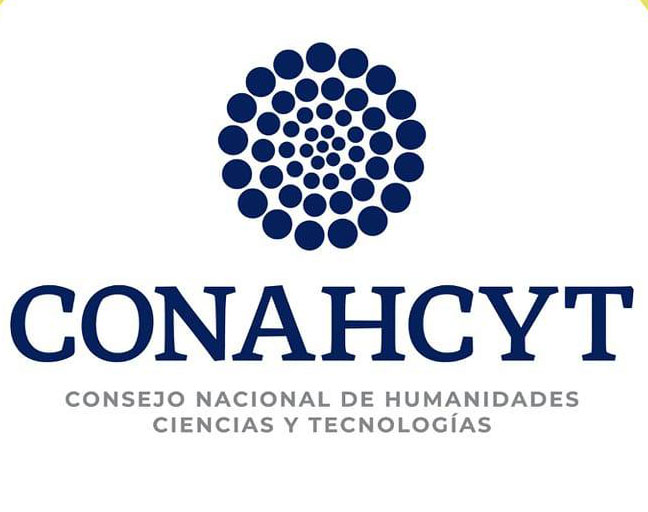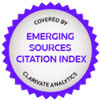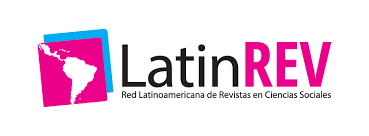Environment within the US-Mexico border: Environmental NGOs, new social partners?
El medio ambiente en la frontera México-Estados Unidos: ¿las ONG ambientalistas, nuevos actores sociales?
https://doi.org/10.21670/ref.2002.05.a02
Keywords:
Environmental degradation, stakeholders, binational environmental organizationsAbstract
This article highlights the role played by the ONG’S in front of the environmental damage in the border region, which we share with the United States. Its objective is to show the scope and the achievements, as well as the challenges and the goals of these new social actors. If we agree about the environment damage is one of the global issues, presented as an critical concern both for the Northern countries as for the Southern countries. The Mexico-United States borderline is an excellent test laboratory to verify not only the existence and action of new groups and social individuals, but also to bring to a discussion table the damage, chaos and environment dangers of this region shared with the United States.Resumen
El artículo destaca el papel que las Organizaciones no Gubernamentales han desempeñado frente al deterioro ambiental en la región fronteriza que compartimos con los Estados Unidos. El propósito es mostrar los alcances y los logros, así como los retos y las metas de estos nuevos actores sociales. Si coincidimos en que el deterioro ambiental es uno de los asuntos globales, que se presenta como preocupación inminente tanto en los países del Norte como en los del Sur, la frontera México-Estados Unidos es un excelente laboratorio de pruebas para comprobar no sólo la existencia y acción de nuevos grupos y sujetos sociales, sino también poner en la mesa de discusión el deterioro, caos y peligro ambiental de la región compartida con los Estados Unidos.References
Alfie, M. y Luis Méndez. 2000. Maquila y movimientos ambientalistas. Examen de un riesgo compartido, UAM-A, CONACYT, Eón Editores, México.
Alfie, M. 1995. “Ecología: a un año del TLC”, El Cotidiano, núm. 67, UAM-A, enero-febrero, México.
...Y el desierto se volvió verde. Movimientos ambientalistas binacionales, UAM-A, UIA, Fundación Miguel Alemán y Eón Editores, México.
Brechin, S, y et.al. 1994. “Global Environmentalism: A Challenge to the Postmaterialism Thesis?” en Social Science Quarterly, vol., 75, núm. 2, University of Texas Press, Austin.
Breitmeier, H y et. al. 2000. “Environmental NGO´S in an Emerging Global Civil Society” en The Global Environment in the Twenty- First Century: Prospects for International Cooperation ,United Nation University Press, Tokyo.
Buttel, F. 1992. “New Directions in Environmental Sociology”, en Annual Review of Sociology, USA.
Camacho, E. 1998. David, Environmental Injustices, Political Struggles. Race, Class and the Environment, Duke University DOI: https://doi.org/10.1515/9780822396635
Press, USA.
Chasek, P. 2000. The Global Environment in the Twenty-First Century: Prospects for International Cooperation ,United Nation University Press, Tokyo.
Dryzek, J. 1997. The Politics of the Earth. Environmental Discourses, Oxford University Press, New York.
Ganster, P. 1997. Borders and Border Regions in Europe and North America, San Diego State University Press and Institute for Regional Studies of the Californias, San Diego.
González, Márquez, J. 1997. Nuevo Derecho Ambiental Mexicano, UAMA, México.
Inglehart, R. 1990. Cultural Shift in Advance Industrial Society, Princeton University Press, New Jersey. DOI: https://doi.org/10.1515/9780691186740
Ingra, H, y et.al. 1996. “Empowering grassroots linkages” en ARIDLANDS, núm.39 primavera-verano, Universidad de
Arizona, Arizona.
McCormick. 1999. “The Role of Environmental NGOs in International Regimes”, en The Global Environment. Institutions,
Law and Policy, Congretional, Quaterly Inc., USA.
Rosenthal, I. 1986. Regional Impacts of U:S-Mexican Relations, Center for US-Mexican Studies, University of California, San Diego.
Sánchez, R. 1990 a. El medio ambiente como fuente de conflicto en la relación binacional México-Estados Unidos, México, COLEF, México.
b. “Contaminación Industrial en la frontera Norte: Algunas Consideraciones para la Década de los Noventa”, en Estudios Sociológicos, vol.8, núm.23, mayo-agosto, México.
Sánchez, R. 1991. “El TLC del norte y el medio ambiente en la frontera norte” en Frontera Norte, vol. 3, núm. 6, COLEF, julio-diciembre, México.
Schneider, B. 1988. The Barefoot Revolution. A Report to the Club of Rome, Intermediate Technologies Publication, London. DOI: https://doi.org/10.3362/9781780441726.000
Shabecoff, Ph. 2000. Earth Rising, American Environmentalism in the 21st Century, Island Press, Washington D.C.
Tiefenbacher, J. 1998. “La Frontera Química: Toxic Emissions and Spills along the U.S.-Mexican Border”, en Journal of Borderline Studies, vol XIII, núm. 1, primavera, Arizona. DOI: https://doi.org/10.1080/08865655.1998.9695509































